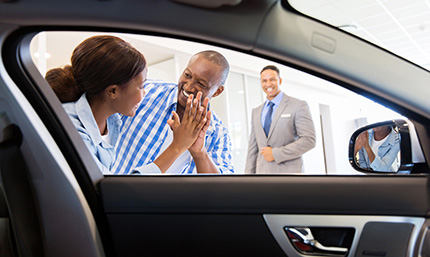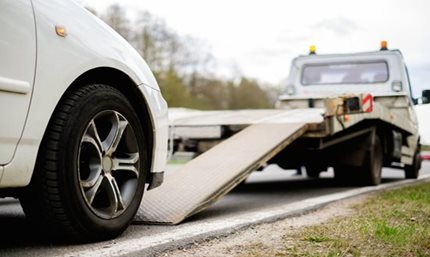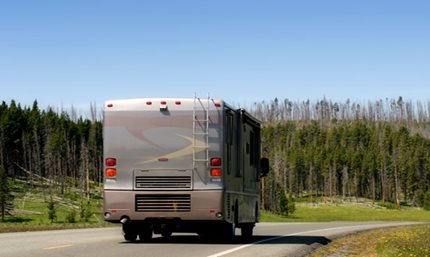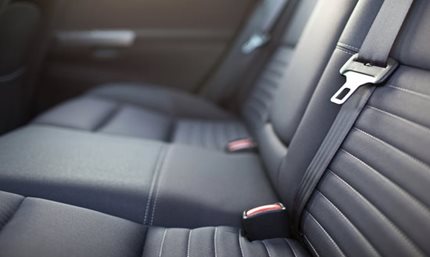News & Tips
How to Buy a New Car

Step 1: Determine your Budget
The best time of year to buy a new car that will offer the most savings is usually from October to December, but the end of any month, three-day weekends, Black Friday, and May are all good times too.
Ask yourself the following questions before settling on a car price range:
- What down payment can you afford, and what car payment would that cause you to have?
- Most people have a down payment range in mind. What would the payment be if you put down the smallest amount in your range? The largest amount?
- If you put down the maximum amount you can for the car, will it be worth having fewer funds in your account? Or would you be better off keeping more money in savings and having a slightly higher car payment?
Keep in mind that your car will usually have additional costs, such as state and local sales tax, a documentation fee, and registration fees.
Step 2: Get Pre-Approved for Your Car Loan
When buying a car, you typically need to focus on three different elements:
- how much you’re going to pay for the car you want and need
- how much you will get for your trade-in vehicle
- Not sure what you can get for your current car? Find out what it’s worth here.
- details of your financing
If you get pre-approved for your financing, that frees you up to focus on strategic negotiations at the dealership so you can get the best price possible and the best trade-in value. Learn more about the auto loan pre-approval process and qualifications here.
| Período de pago | Purchase APR* "As Low As" | Cantidad mínima del préstamo | Payment per $1,000 |
|---|---|---|---|
| Hasta 48 meses | 5.74% | Sin mínimo para cantidad del préstamo | $23.37 |
| Hasta 66 meses | 6.24% | $10,000 | $17.94 |
| Hasta 75 meses | 6.74% | $12,000 | $16.38 |
| Hasta 84 Months | 6.99% | $20,000 | $15.09 |
Rates shown are fixed Annual Percentage Rates for vehicle model years 2025 and newer. Rates are subject to change. Your actual rate and terms are affected by your creditworthiness, term selected, vehicle type, and model year. Certain restrictions apply. You may be asked to furnish a down payment. Florida loans are subject to Documentary Stamp Tax. The tax amount is not included in the quoted APR.
Step 3: Weigh the Advantages of a New Car vs. a Used Car
New Cars
Another important consideration that many people overlook with new cars is depreciation, which has to do with the value that your car loses over time. According to Kelley Blue Book, depreciation is among the largest costs of owning a car, even more so than fuel and repairs. New cars can lose up to 20 percent of their value as soon as you drive off the lot and 60% within the first five years.
Understanding how well a vehicle holds its value can also help you avoid getting “upside-down” or “underwater” on your auto loan, where you owe more than the market value of your vehicle. When financing, choose a loan term that is no longer than the length of time that you are likely to keep the car.
Pssst, you may be able to get a tax break on the depreciation of your car, so be sure to consult with your tax advisor about deductibles.
Used Cars
Also, consider obtaining a CARFAX report when looking at used vehicles to get a complete history of the vehicle as well as make sure it was not involved in any major accidents nor has any frame or flood damage, etc. You can also negotiate to take the vehicle to your mechanic for review before you sign on the dotted line.
Certified Pre-Owned Vehicles
Step 4: Shop for Your Car
These are some of the best online car buying sites: Consumer Reports, Edmunds, Autotrader, CarMax, Carvana, Cars.com, CarsDirect, AutoTempest, and CarGurus. Also, check local inventory listings to see what is available in your area to help narrow the search to what you are looking for specifically. With today’s competitive market, you may need to be more flexible on makes, models, colors, and features.
Step 5: Research All Possible Discounts in Advance
Check the automakers’ websites and look for incentives in their “Current Offers” section to see what you may qualify for. You’ve probably seen ads promoting cash-back deals during your search; these incentives can be deducted after you negotiate the final price of the car that suits you.
At Space Coast Credit Union (SCCU), we offer exclusive auto rates for community heroes.
Step 6: Take your Time with the Test Drive
On average, new car buyers hold onto their cars for more than 8 years; so take your time when you’re giving the car a spin to make sure you really love it.
Do not hesitate to ask for more time behind the wheel to ensure you like the driving experience:
- Spend time in the car while it’s parked to adjust the seats.
- Experiment with the controls to determine whether passengers would be comfortable.
- Check to see if your regular cargo would fit well.
- Open and close all the doors and check all the windows.
- Check all the A/C and heat settings.
- Try out the sound system to make sure speakers work well.
- Test all the lights, technical features, seatbelts, mirrors, signals, and windshield wipers.
- Drive at higher speeds, perhaps on the highway; check the gauges; and test the brakes.
Step 7: Review the Purchasing Service Contract, Maintenance, and GAP Insurance
Be sure to consider Guaranteed Asset Protection (GAP) insurance. If your car is totaled or stolen when you owe more on your loan than your car is worth, and your collision or comprehensive insurance only pays your lender the total depreciated value, then GAP insurance bridges the difference in costs by helping you settle the loan with your lender instead of the costs coming out of your pocket.
Step 8: Use Smart Negotiating Strategies
Take your time! Go over all of the details carefully once you’ve reached an agreement to buy, make sure that you aren’t paying any unnecessary fees when you are presented with a sales contract, and verify that everything you negotiated verbally is spelled out in writing.
Get a Better Rate with SCCU
Apply for a new car loan at SCCU today!

















.jpg?width=430&height=257&ext=.jpg)




